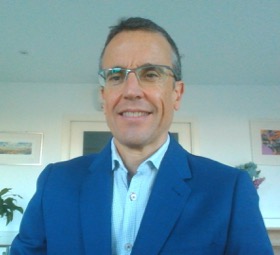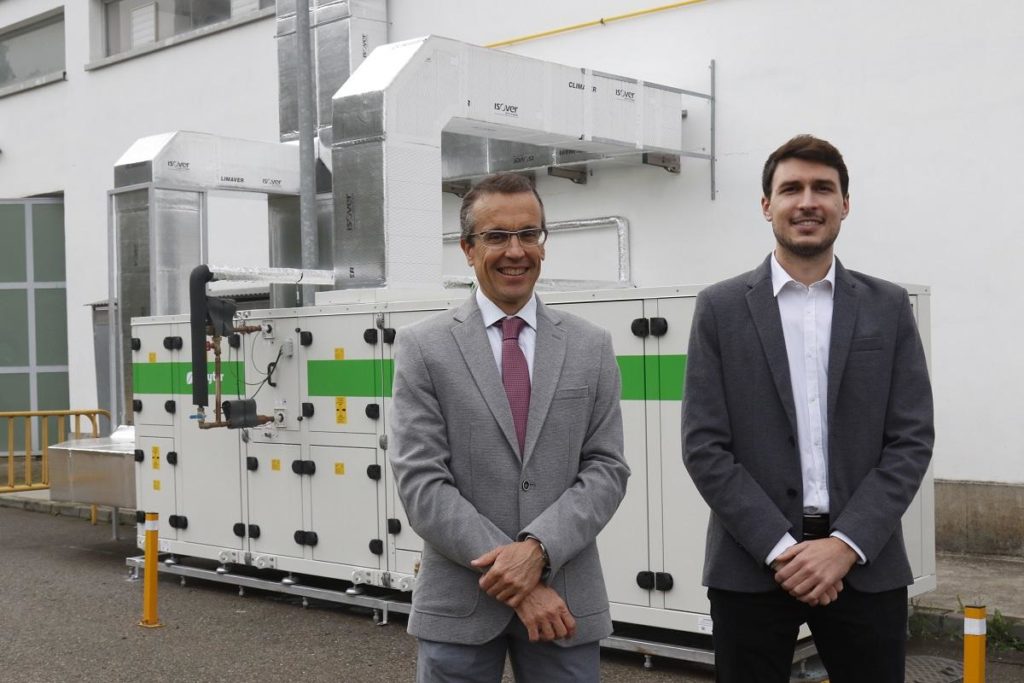Manuel Ruiz de Adana Santiago, Head of Research Group in Applied Thermal Engineering at the University of Córdoba talks to ESCI about air-cooling systems based on renewables and the future of indoor air management systems in the COVID-19 world.
ESCI: Before getting started with the Renewable Air Cooling System (RACU) that you have been working on, let’s set the ground for the audience: What systems are normally used to maintain comfortable level of temperature indoors and guarantee air quality?
M. Ruiz de Adana: Heating, Ventilation and Air Conditioning Systems (HVAC) are widely used to maintain thermal comfort and indoor air quality in indoor spaces, but because of their relatively high energy consumption, new strategies for energetic efficiency are being implemented.

ESCI: How do these systems function exactly?
M. Ruiz de Adana: There are many types of HVAC systems. Generally speaking, a traditional HVAC system is composed of:
- a damper section to supply outdoor air from the outside to the HVAC system
- an air filter section, to clean the air before it is being supplied to the room
- a temperature control section for cooling or heating the air, and
- a fan section for air supply into the room.
It is important to note that traditional HVAC systems have two environmental concerns: They use refrigerants that can damage the environment and compressors that can require a significant energy consumption.
ESCI: How much energy does such a system require to function in two very different settings like say, a hospital or a family house?
M. Ruiz de Adana: The energy consumption of traditional HVAC systems can vary from a small HVAC system for a family house to a large HVAC system for a hospital. In general, the energy consumption increases with the need of ventilation. For example, in a hospital, ventilation rates are higher than in a regular residential building: They can reach up to 20 liters per second and person, which logically increases the energy consumption of traditional HVAC systems. Annual energy consumption in hospitals can be more than 4 times the annual energy consumption of residential buildings.
ESCI: And what kind of energy sources are powering such systems? Are there “green” components or green alternatives to reduce their energy demands?
M. Ruiz de Adana: Traditional HVAC systems are powered by electricity as the main energy source. In the last years, some HVAC components have been modified to increase their energy efficiency. However, the use of refrigerants in traditional HVAC systems is still a major environmental concern. Some refrigerants have an ozone depletion potential, while others have a global warning potential, i.e. they can damage the ozone layer in the atmosphere and contribute to global warming effect.
ESCI: Air-cooling systems are known to require enormous amounts of energy to function, why is that?
M. Ruiz de Adana: The increase in outside temperature has been related to an increase in energy consumption of air-cooling systems, since for some HVAC systems, the higher the outdoor temperature is, the higher is the energy consumption. HVAC systems can involve a refrigeration compression system using refrigerant fluid and a compressor, which consume a significant amount of energy, to “cool” this hot air during the summer. However, when innovative systems like RACU are deployed, the situation changes.
ESCI: You are part of a team developing a renewable air-cooling unit (RACU), what is it exactly and what does renewable mean here?
M. Ruiz de Adana: RACU cools the air by using renewable energy sources from a district heating system. A district heating system distributes heat generated in a centralised location through a system of insulated pipes. This heat is normally used for space and water heating. During the summer period, however, the demand for this heat is very low. In this period, RACU can use the renewable district heating network to produce cooled air, thus cooling the buildings connected to the network. Therefore, this complete heating and cooling system allows to heat and refrigerate all buildings in a district by using the district energy distribution network.
The RACU main characteristics are:
- RACU employs 100% renewable energy sources, ensuring a very low energy consumption.
- RACU uses 100% outdoor air, ensuring an excellent ventilation and a very high Indoor Air Quality (IAQ) in the building.
- RACU is environmentally friendly because it doesn’t need refrigerants.
- RACU independently controls air temperature and air humidity in the building, ensuring an excellent thermal comfort for the building occupants.
ESCI: The RACU is part of the WEDISTRICT demonstration site at Alcalá de Henares. Can you tell us more about it?
M. Ruiz de Adana: Different renewable technologies will be connected in the demonstration site at Alcalá de Henares, i.e. solar collectors, parabolic solar collectors, a biomass boiler, absorption systems and others. These renewable technologies are used to produce hot and cold water for the renewable district heating and cooling network. The network is used to cool and heat different buildings throughout the year. The RACU is connected to the heating network to produce cooled air for the building during the summer. So, basically, RACU transforms hot water into cooled air.
ESCI: Since the COVID-19 started, we have been made aware of the importance of clean air, which in places running on HVAC systems like hospitals, can be difficult to achieve (due to the need for special air filters, etc.); wouldn´t RACU be advantageous in this respect as well?
M. Ruiz de Adana: High Indoor Air Quality (IAQ) has been always a requirement in indoor spaces in buildings. Since COVID-19 started, IAQ is even more important and outdoor air intake is an important requirement to lower the probability of airborne infection. So, the more outdoor air supplied by the HVAC system, the lower is the risk of airborne infection. RACU ensures 100% of outdoor fresh and filtered air supply into the building, thus lowering the risk of airborne infection without any major increase in energy consumption.
For example, in hospitals, the ventilation requirements are very high. RACU could fulfill these requirements by using 100% renewable sources. The higher the ventilation requirements, the higher the potential of RACU for that building, since, to date, RACU is one of the few technologies that has the potential to allow 100% outdoor air renewal.
ESCI: The last question is: when do you expect to have a functioning RACU prototype? And when do you expect to see RACUs available in the market?
M. Ruiz de Adana: We designed RACU several months ago and it has already been manufactured. Now, we are commissioning the RACU in our Research Lab at Campus of Rabanales at the University of Cordoba. We will now start testing it under an intensive analysis energy performance programme.
From summer 2021 onwards, RACU will be installed and operated at the demonstration site in Alcalá de Henares (Madrid). Then, the performance of RACU and the whole renewable district cooling and heating network will be tested during a one-year period. The main objective will be to demonstrate that it is possible to heat and cool a building with 100% renewable energy sources by means of a renewable heating and cooling network, where RACU is one of the main components.
